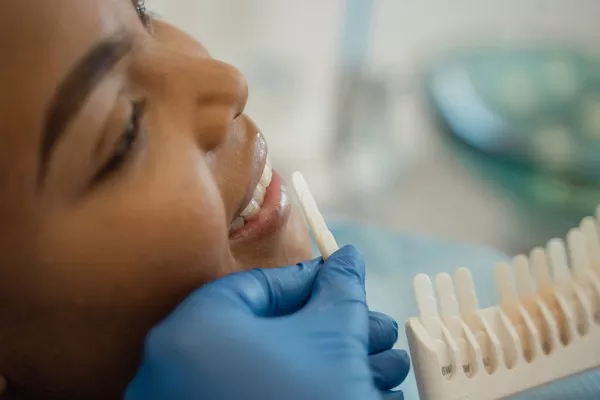Gingivitis, a common form of gum disease, is characterized by inflammation and irritation of the gums due to plaque buildup. While gingivitis primarily affects the gingival tissues, it can also have implications for the teeth themselves. One such consequence is tooth pain or sensitivity, which can be experienced by individuals with gingivitis. This article delves into the relationship between gingivitis and tooth pain, exploring the causes, symptoms, and potential treatment options. By understanding this connection, individuals can take proactive steps towards maintaining optimal oral health.
Understanding Gingivitis
1.1 Definition and Causes:
Gingivitis is an early stage of gum disease that arises from inadequate oral hygiene practices. When plaque, a sticky film of bacteria, accumulates along the gumline, it releases toxins that irritate and inflame the gums. Poor oral hygiene, hormonal changes, certain medications, smoking, and systemic diseases can increase the risk of developing gingivitis.
1.2 Progression and Complications:
If left untreated, gingivitis can progress to more severe periodontal diseases, leading to irreversible damage to the gums, jawbone, and supporting structures. Advanced stages of gum disease may require extensive dental interventions and can result in tooth loss.
Gingivitis and Tooth Pain – The Connection
2.1 Dental Sensitivity:
Gingivitis can cause tooth pain or sensitivity due to several reasons. As the gums become inflamed and recede, the underlying tooth roots may become exposed. Unlike the enamel-covered crowns of the teeth, tooth roots are covered by cementum, a protective but less dense layer. Exposed root surfaces are more susceptible to temperature changes and external stimuli, leading to heightened sensitivity and discomfort.
2.2 Erosion and Dentin Exposure:
Gingivitis-associated plaque buildup can contribute to acid production by oral bacteria. This acid can gradually erode the enamel, the protective outer layer of the teeth. As the enamel wears away, the underlying dentin, a softer tissue, may become exposed. Dentin contains microscopic tubules that connect to the tooth’s nerve center, known as the pulp. Stimuli, such as hot or cold substances, sugar, or air, can travel through these tubules, triggering tooth pain or sensitivity.
2.3 Gum Recession:
Gingivitis-related inflammation can cause the gums to recede, exposing the tooth roots. With the loss of gum tissue, the protective barrier around the teeth weakens. Additionally, recession can lead to root surface exposure. The combination of diminished protection and root exposure increases the likelihood of experiencing tooth pain or sensitivity.
2.4 Dental Abscesses:
In some cases, untreated gingivitis can progress to periodontal abscesses. These are localized infections within the gum tissue or around the root of a tooth. Abscesses often result from the accumulation of bacteria and pus, causing significant pain, swelling, and tenderness in the affected area. Tooth pain caused by abscesses may be severe and accompanied by other symptoms such as fever, swollen lymph nodes, and an unpleasant taste in the mouth.
2.5 Occlusal Changes and Bite Misalignment:
Severe gingivitis can affect the alignment of teeth due to bone loss and gum recession. As the supporting structures weaken, teeth may shift or become misaligned. Altered occlusion (bite) patterns can place excessive pressure on certain teeth, resulting in tooth pain or discomfort during biting or chewing.
Seeking Professional Help and Treatment Options
3.1 Importance of Dental Evaluation:
If tooth pain or sensitivity is experienced, it is essential to seek professional dental care promptly. A comprehensive examination by a dentist can help determine the underlying cause and develop an appropriate treatment plan. Diagnostic tools such as X-rays, periodontal probing, and clinical assessments are used to evaluate the extent of gingivitis, identify contributing factors, and assess any potential damage to the teeth and supporting structures.
3.2 Treatment Approaches:
The treatment of tooth pain associated with gingivitis depends on the severity of the condition and its underlying causes. The following interventions may be recommended:
Improved Oral Hygiene:
Practicing proper oral hygiene, including regular brushing, flossing, and using antimicrobial mouth rinses, can help eliminate plaque and prevent further gingival inflammation.
Professional Dental Cleaning:
Scaling and root planing, performed by a dental professional, involves the removal of plaque and tartar from above and below the gumline. This procedure helps reduce bacterial load and promote healing of the gums.
Is gingivitis permanent?
No, gingivitis is not necessarily permanent. Gingivitis is an early and reversible stage of gum disease that is characterized by inflammation of the gums. It is primarily caused by the buildup of plaque on the teeth, which contains bacteria that irritate the gums.
With proper oral hygiene practices and regular dental care, gingivitis can be treated and even reversed. Good oral hygiene includes brushing your teeth at least twice a day, flossing daily, and using mouthwash as recommended by your dentist. Regular dental check-ups and professional cleanings are also essential to remove any plaque and tartar buildup.
If left untreated, gingivitis can progress into a more severe form of gum disease called periodontitis, which can lead to irreversible damage to the gums, bone loss, and even tooth loss. Therefore, it’s important to address gingivitis promptly to prevent further complications.
Remember, maintaining good oral hygiene practices and seeking professional dental care are key to preventing and managing gingivitis effectively. If you suspect you have gingivitis or have concerns about your gum health, I recommend consulting with a dentist for an accurate diagnosis and appropriate treatment plan.
conclusion
Gingivitis itself typically does not cause tooth pain. Gingivitis primarily manifests as inflammation and bleeding of the gums rather than tooth discomfort. However, if left untreated, gingivitis can progress into a more advanced form of gum disease called periodontitis which can lead to tooth pain.
Periodontitis occurs when the inflammation from gingivitis spreads and causes damage to the tissues and bone supporting the teeth. As the condition progresses, it can result in gum recession, formation of pockets between the gums and teeth, and even bone loss. These factors can contribute to tooth sensitivity, pain, and looseness.
It’s important to note that tooth pain can have various causes, and it’s not always directly related to gingivitis or gum disease. Other dental issues such as tooth decay, dental abscesses, cracked teeth, or other underlying oral health problems could be responsible for tooth pain.
If you are experiencing tooth pain or have concerns about your oral health, it’s best to consult with a dental professional. They can evaluate your symptoms, diagnose the underlying cause, and recommend appropriate treatment options to address the issue effectively.
Related Topics:



























